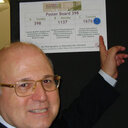Factors influencing dry mouth in patients with primary Sjögren syndrome: usefulness of the ESSPRI index.
Palabras clave
Abstracto
OBJECTIVE
To evaluate health-related quality of life in a large series of primary SS patients using the recently-proposed ESSPRI questionnaire and to evaluate the relationship between the intensity of oral dryness and other signs and symptoms frequently found in these patients.
METHODS
We evaluated 90 primary SS patients seen consecutively; all fulfilled the current classification criteria. All patients completed the ESSPRI questionnaire. We compared the mean values of the ESSPRI-dry mouth item with other ESSPRI items related to sicca features, general symptoms, quality of life, quality of sleep, psychological and psychiatric features, extraglandular involvement, laboratory features and immunological markers and cardiovascular risk factors. Multivariate regression analysis with a backwards stepwise selection method was performed to identify those variables that were independently associated with dry mouth.
RESULTS
Mean intensity of oral dryness measured by the corresponding ESSPRI item was 7.17±0.23. Oral dryness correlated with age both at diagnosis and at study inclusion (p=0.013), but not with gender or with time of disease evolution. No significant correlation was found with the SF-36, HAQ and FIQ questionnaires. We found a significant correlation between the intensity of oral dryness and the quality of sleep (p=0.001), anxiety and depression measured by the GH28 (p=0.004 and 0.024, respectively), and a statistically-significant trend for anxiety and depression measured by the HADS (p=0.08 and 0.07, respectively). No significant correlation was found with the main extraglandular and immunological features; however, a significant correlation between oral dryness and hypertension (p=0.019), type II diabetes mellitus (p=0.005) and hypercholesterolemia (p=0.011) was found. Multivariate regression analysis shows that fatigue measured by ESSPRI (p=0.049), sleep quality (p=0.008) and hypercholesterolemia (p=0.008) were independently associated with dry mouth.
CONCLUSIONS
We report on the usefulness of the ESSPRI index in evaluating HRQOL associated with oral dryness in primary SS patients. Oral dryness correlated with age and the other sicca symptoms measured by ESSPRI, but not with the main systemic and immunological SS features. In contrast, oral dryness was strongly correlated with fatigue, pain, psychological distress, poor sleep and vascular risk factors. A multidisciplinary therapeutic approach may be the best way of minimizing oral dryness and its consequences in primary SS patients.



